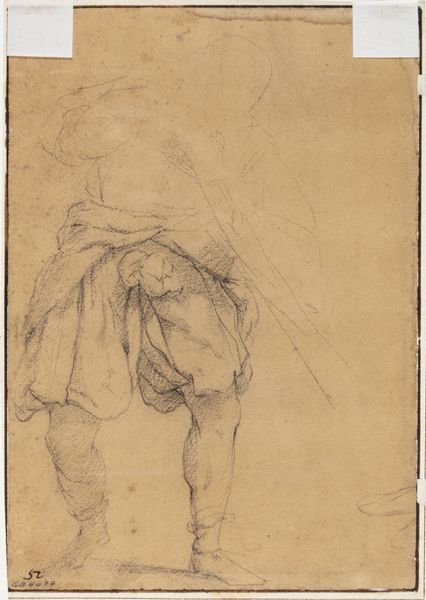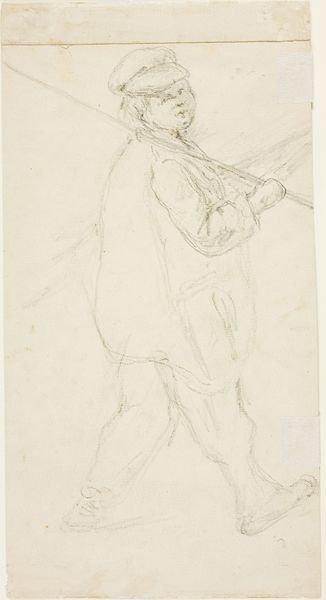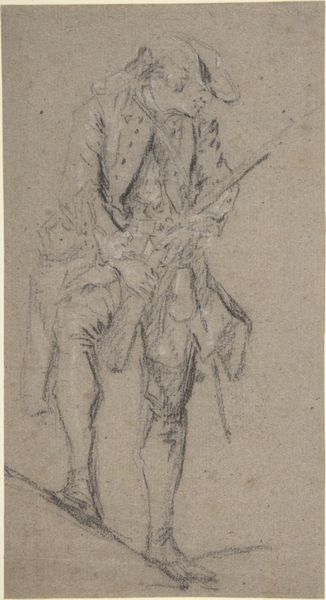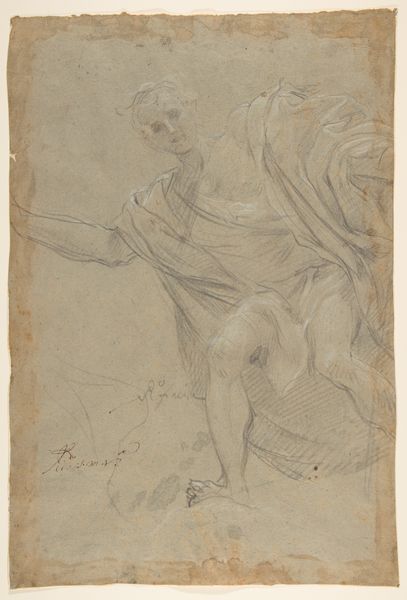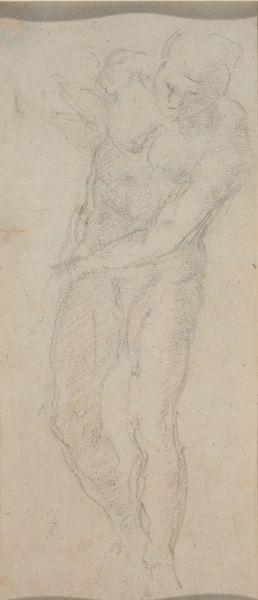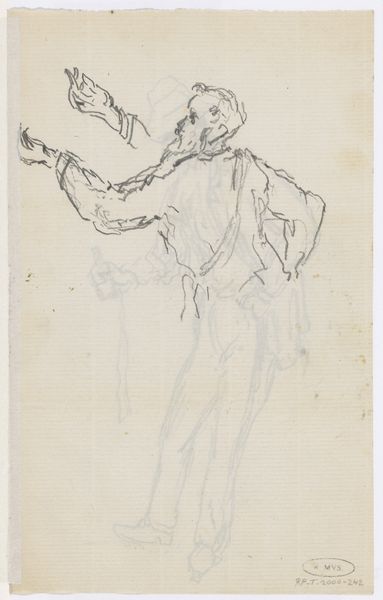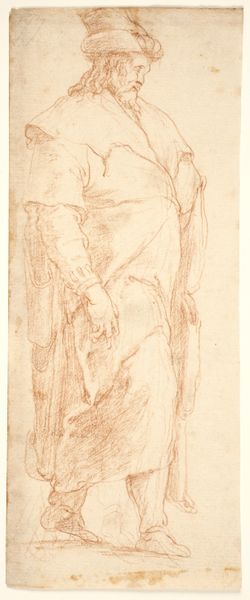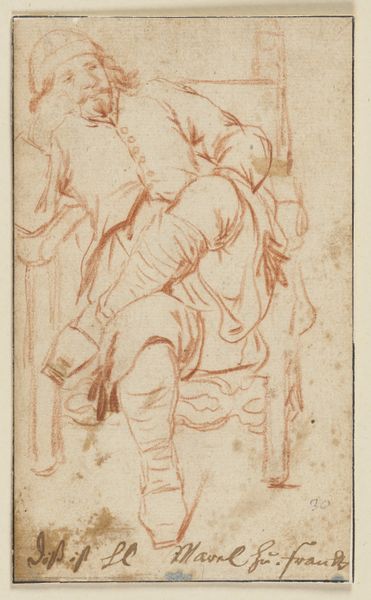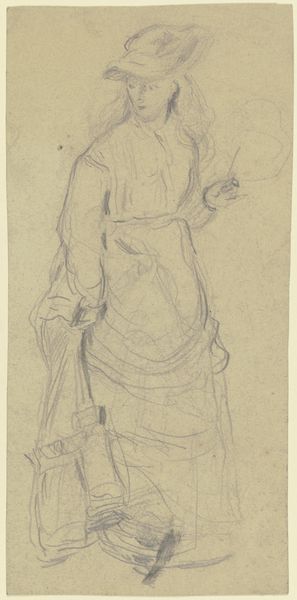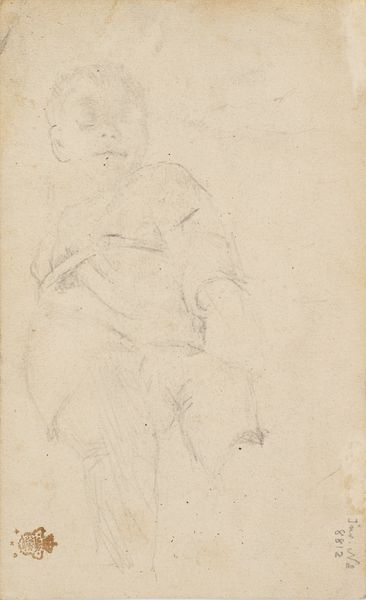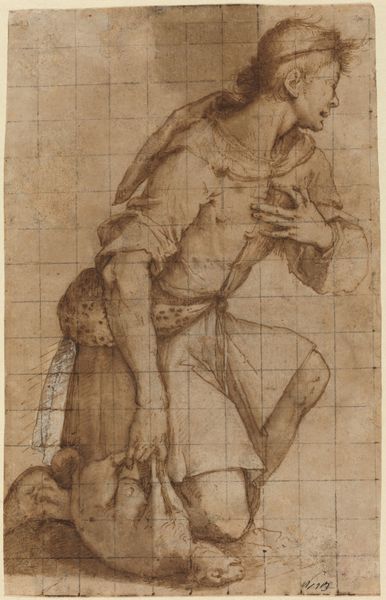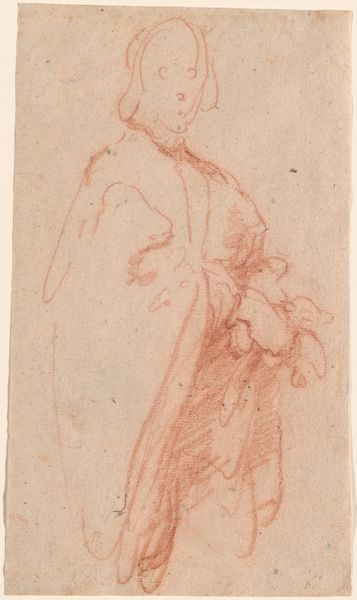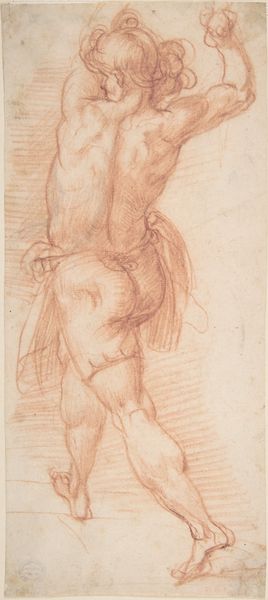
drawing
#
portrait
#
drawing
#
11_renaissance
Dimensions: 221 mm (height) x 156 mm (width) (bladmaal)
Editor: Here we have "Man taking aim with a gun," a drawing by Filippo Paladini, sometime between 1544 and 1615. The figure's stance is compelling – alert, but coiled. It evokes a sense of latent aggression, despite the calm medium of a simple drawing. How do you interpret the emotional weight conveyed through such understated means? Curator: The image captures a moment rife with symbolic tension. Consider the gun itself: initially a tool for hunting, for survival, it’s evolving into an instrument of power, a means of control and violence. The man taking aim embodies that shift, poised between tradition and a dawning, more dangerous future. Do you perceive any other indications of this societal change in the drawing? Editor: Perhaps his clothing? It seems practical, not ornate, hinting at a shift away from purely aristocratic displays of power. Curator: Precisely. While we might see simple garments, think about their symbolic implications within the broader context of Renaissance society. The figure's groundedness, his active engagement, symbolizes a changing world where agency is increasingly vested in the individual, a democratizing influence if you will. Consider what we project onto images of men and weaponry, even today. Are these archetypes merely historical? Editor: I never considered the continued presence of such tropes! It’s a fascinating echo through time, the individual, power and control – quite the message hidden in a simple drawing. Curator: Indeed. The potency of images lies not only in what they show, but what they awaken within us from the well of cultural memory. This piece showcases this perfectly.
Comments
No comments
Be the first to comment and join the conversation on the ultimate creative platform.
